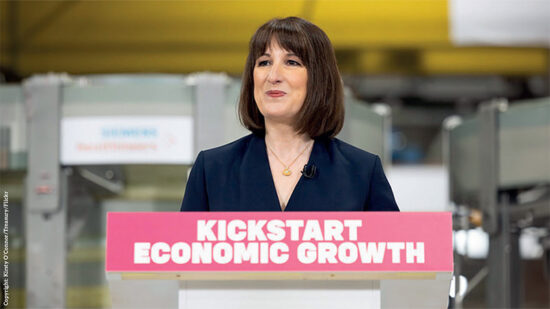Does Transamerica, owned by Aegon, leverage off the Aegon brand?
Yes, and Transamerica Life Bermuda shall continue to leverage off Aegon’s capability and support. There are significant advantages in doing so and this approach allows us to share platforms and development capabilities. In Asia, for example,
the Aegon HK regional office provides finance, actuarial, human resources and operation oversight to the functional areas in the branches.
How long has the company been operating in Asia and where is its head office?
The first Transamerica sales office was established in Shanghai in 1933. The company expanded its commitment to the region with new sales offices in the major northern cities until World War II temporarily forced their closures.
Despite office closures, one legendary agent, Tsufa Lee, demonstrated outstanding resourcefulness and decided to hide and later recover policy documents to prevent their loss, enabling us to honour our commitment to customers and pay claims to policyholders in China.
Since 1947, Transamerica companies have continued to serve Asia with a full-service branch office in Hong Kong opening in 1993. In 2006, Transamerica Life Bermuda established full-service branches in Hong Kong and Singapore.
Based on current momentum, our new business in 2013 will approximately double that of 2011 and 2012. Moreover, we forecast that Singapore 2013 new business will likely grow by 2.5 times versus 2012.
Describe your product range and explain how your offering differs from your competitors.
Universal Life is the flagship product for Transamerica, while we were in fact the pioneers and leaders in universal life products. TLB Universal Life is a carefully engineered product for permanent coverage. The plan specifically considers the needs of high net-worth individuals, such as business and estate planning. During 2013, we have underwritten a number of jumbo cases, ie in excess of $25m (£15.42m) including an $100m protection amount.
Term products have been another competitive strength of TLB. We offer pure term products with very competitive premiums to suit protection needs for a definite period, such as mortgage and business loans.
Looking ahead, we recognise there is a need and a desire for appropriate solutions available to address healthcare concerns in the ageing population. It is becoming an ever-increasing topic of interest for clients, both in the affluent and high-net-worth segments. So the area of HNW health solutions is certainly of interest.
It would also be reasonable to say that, while you don’t think HNWIs typically discuss ‘pensions’, we think ‘retirement solutions’ is also an area being more talked about by HNW clients. Within those two areas there are notable product opportunities.
Where do you distribute your products and do the products sold differ much in different markets?
TLB distributes products in Hong Kong and Singapore. The products sold are the same in both markets. This is extremely important, given the mobility of HNWIs and our regional partners.
Similarly, we have identical process and support to provide a consistent customer experience, whether that is in Hong Kong or Singapore.
How are TLB products distributed?
TLB distributes products solely through carefully selected and authorised representatives – brokers, general agencies, private banks etc.
We only pair with business partners who share and can demonstrate a mutual commitment to providing value, security and exceptional customer service.
We devote our efforts and resources to carefully selected business partners and are committed to developing long and stable relationships.
We have an internal evaluation system to ensure best deployment of resources to support our three-tier partnership model.
Where are you seeing the strongest sales this year, both in terms of countries and products?
Our Singapore branch contributes more in terms of new business backed by prosperous economic development and maturity of HNW segment, despite tight regulations.
Sales of universal life continue to dominate as one of the key solutions for wealth transfer purposes in the HNW segment. Emerging wealth and increasing awareness of estate planning are two key driving factors.
According to research, one-third of the high net-worth population now resides in Asia, about 3.7 million, and the figure has been growing steadily.
Are there any areas where sales have fallen this year?
There is no area with declining sales within TLB. To the contrary, we anticipate healthy growth this year. Until September, our new business volume has increased by almost 50% compared with the full year of 2012.
There are changes being made in Asia currently as to how some products are distributed. In Hong Kong there have been changes to the rules surrounding the sale of investment-linked assurance schemes and in Singapore the Financial Advisory Industry Review (FAIR) is under way. Do you envisage any changes to your distribution model in the next few years?
I think the trend is moving back to specialisation rather than striving to be a financial ‘super market’, which was much more the case prior to the debt crisis in 2008.
Specialisation will probably push the sale of sophisticated financial products to specialist sales channels, such as financial advisers and brokers. We have also seen an increasing trend for the banks to set up insurance specialists to target more sophisticated segments.
Looking at Singapore specifically, the introduction of FAIR is a good thing, lessons have to be learned from the global financial crisis. Companies have to ensure they are transparent in how they distribute and how people are remunerated – the expectation is there from the customer and also the regulator.
The reviews across the globe, which are ongoing and not just in Singapore, mean regulators are looking at how products are distributed and how people are remunerated. They are all driven by consistent customer value and transparency, and one of the major benefits of a universal life product, such as those sold by TLB, is that it is completely transparent.
The FAIR actions and the actions of regulators globally mean customers are receiving fair value, which is a good thing.
The change is actually trending favorably towards TLB. We are a niche provider working closely with specialist international brokers and banks targeting the HNW and ultra-HNW segments.
Given the sophistication of our target segments, we have been adopting a very prudent approach and higher-than-required compliance standard. The infrastructure and knowledge in place are ready for any demanding regulatory requirements that may arise.
What is TLB’s view of the changing shape of global regulation?
Regulatory standards have risen and will continue to rise in both the institutional and consumer sectors across the globe. The trend is particularly notable in developed countries such as the US and the UK, but it is also emerging in developing countries such as China and Korea.
I think highly regulated countries actually have the advantage in attracting an influx of wealth. Mobility of people and wealth has driven the search for financial solutions and regimes that can provide better security and trust. This is particularly important for HNWIs, whose primary interest is to protect their wealth and pass it on to the next generation with certainty and comfort.
Does TLB plan to target any new markets in the near future?
If you look at the macroeconomics of the Middle East and Africa, you must recognise that both these regions are consistently delivering good growth stories. So these are certainly two areas we are monitoring.
More broadly, we are always looking at opportunities to expand the reach of TLB. However, we are very selective because we want to ensure that if we pursue new ventures they fit with Aegon’s strategy in terms of segments, chosen markets and our risk/return profile, and that our infrastructure and resources are able to manage new opportunities without compromising the quality of our service standard.








